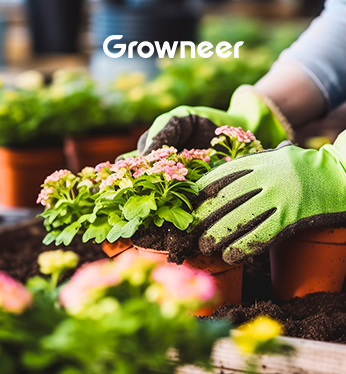US: Free Shipping on Order $39 and more! Germany: Free Shipping!
US: Free Shipping on Order $39 and more! Germany: Free Shipping!
Hydroponics offers precision, speed, and cleaner growing—but even the most high-tech systems can run into common issues. Whether you’re using a commercial system or a countertop kit, you might face yellowing leaves, slimy roots, or slow plant growth at some point.
The good news? Most hydroponic problems are highly fixable once you understand the root causes. This guide walks you through the most frequent challenges and how to solve them, so your plants can thrive again.
Symptoms: Leaves turning pale yellow or showing interveinal chlorosis (green veins with yellow space in between).
Possible Causes:
pH imbalance preventing nutrient absorption
Nitrogen, iron, or magnesium deficiency
Overwatering or poor oxygenation at the root zone
Solutions:
Check and adjust pH to the ideal range (5.5–6.5 for most greens)
Use a complete nutrient mix with chelated micronutrients
Ensure good aeration using an air pump or oxygenating stones
📝 Tip: If new leaves are yellowing first, it’s likely iron deficiency. If older leaves are yellowing, check nitrogen.
Symptoms: Green slime on roots, walls of the reservoir, or tubing
Possible Causes:
Light exposure to nutrient solution
Warm temperatures and still water
Solutions:
Block all light from reaching the reservoir (use opaque containers or covers)
Clean system components with hydrogen peroxide (3–5%) between grows
Increase water circulation and lower ambient temperature if possible
⚠️ Note: Algae compete with plants for nutrients and can harbor pathogens—don’t ignore it.
Symptoms: Brown, mushy, or foul-smelling roots; plant wilting
Possible Causes:
High water temperatures (>22°C or 72°F)
Lack of oxygen in the root zone
Pathogen buildup in stagnant systems
Solutions:
Maintain water temps between 18–21°C (64–70°F)
Add an air pump to oxygenate nutrient solution
Apply beneficial microbes (e.g., Trichoderma or mycorrhizae) as a biological control
Use sterilized tools and disinfect between plant cycles
🔍 Pro Tip: Healthy roots should be white, crisp, and odorless. Anything else is a red flag.
Symptoms: Plants grow slowly, don’t flower, or produce undersized fruits
Possible Causes:
Imbalanced NPK ratios (too much nitrogen, not enough phosphorus/potassium)
Inadequate light (intensity or spectrum)
Overcrowding in the grow area
Solutions:
Adjust your nutrient formula for the growth stage (e.g., boost P and K during fruiting)
Use full-spectrum grow lights with at least 12–16 hours of light daily
Space plants to ensure good airflow and light access
🌞 LED lights in the 400–700nm (PAR) range work best for indoor hydroponics.
More problems and fixes coming soon (mold, nutrient lockout, pump failure, etc.)
Stay tuned—

Subscribe to our newsletter to get regular access to the latest events, offers, and premium services!